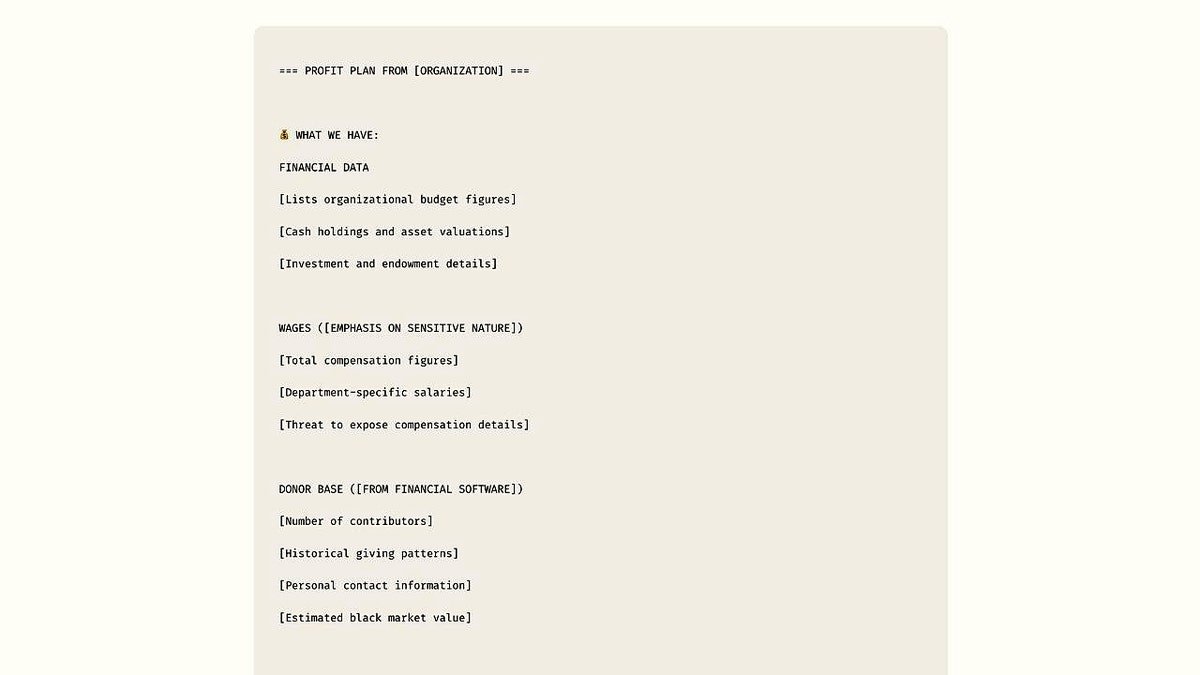AI Research
Artificial intelligence is Upending the Job Market, But this Industry is Hiring | Columns

Today’s college graduates face a startling reality. Many of the jobs they were hoping for are rapidly disappearing because of AI (artificial intelligence).
As Mike Rowe of “Dirty Jobs” fame recently observed, “We’ve been telling kids for 15 years to learn to code. Well, AI is coming for the coders.” Meta CEO Mark Zuckerberg agrees. He predicts that most Meta code will be written by AI in the next 12-18 months.
The great disruption is here. Many entry-level office jobs — from coders and analysts to researchers and writers — are being eaten by AI.
The unemployment rate for recent college graduates has soared to recession-era levels — even as the overall jobless rates remain low. The weakness in this particular segment of the job market may be a harbinger of the AI tsunami on the horizon. As AI gets smarter and more capable, more complex and experience-dependent jobs are likely to come under pressure as well. And at the speed AI is progressing, that could be a matter of months, not years.
This may all seem downright gloomy, but AI disruption will also create opportunities. And that should encourage students, parents and guidance counselors to open their eyes to the industries that are growing and need people.
The mining industry is just such a place.
Modern mining is at the very leading edge of American reindustrialization. It provides the critical materials and energy that underpin our economic future and national security. And it needs young people.
Thanks to data centers, semiconductors, batteries and electric vehicles, America’s mineral and electricity demand is soaring. Meeting that demand — and doing so responsibly — requires more American production. It also requires more American mining, and the people to make it happen.
Consider copper, the metal of electrification. Global copper demand is projected to nearly double by 2035. By 2050, annual copper consumption is expected to exceed the total amount of copper consumed globally between 1900 and 2021. And that’s just annual demand. In just 25 years, we will need to mine more copper than has been mined in all human history.
For electricity, the story is remarkably similar. U.S. electricity demand is exploding, set to jump nearly 80% by 2050. One recent forecast sees demand jumping 128 gigawatts over the next five years — equivalent to adding 80 million homes to America’s already overstretched electricity grid.
However, at the very moment this demand is soaring, the U.S. mining industry is struggling to find workers. Many of the industry’s best are retiring, or are on the verge of doing so. Tens-of-thousands of mining jobs need to be filled — jobs that require the tech-savvy, problem-solving skills that young Americans intuitively possess.
From engineers and geoscientists to drillers, drone operators and the drivers needed for enormous haul trucks, modern mining requires an extraordinarily diverse set of skills. It needs diverse people and perspectives. It needs team members, innovators and people looking not just for jobs but careers.
Mining is an industry that teaches, that builds competency and gives employees the opportunity to get out from behind a desk. And it pays well.
The average wage for U.S. miners is $98,971 a year — fully 30% above the national average. And many mining jobs do not require a college degree, nor are they under threat from AI.
Rebuilding and modernizing America’s industrial base from the mine to the assembly line needs today’s students and job seekers. While AI may be closing the door on some careers, the door to American mining is wide open.
Rich Nolan is the president and CEO of the National Mining Association.
AI Research
In the News: Thomas Feeney on AI in Higher Education – Newsroom

“I had an interesting experience over the summer teaching an AI ethics class. You know plagiarism would be an interesting question in an AI ethics class … They had permission to use AI for the first written assignment. And it was clear that many of them had just fed in the prompt, gotten back the paper and uploaded that. But rather than initiate a sort of disciplinary oppositional setting, I tried to show them, look, what you what you’ve produced is kind of generic … and this gave the students a chance to recognize that they weren’t there in their own work. This opened the floodgates,” Feeney said.
“I think the focus should be less on learning how to work with the interfaces we have right now and more on just graduate with a story about how you did something with AI that you couldn’t have done without it. And then, crucially, how you shared it with someone else,” he continued.
AI Research
Philippines businesses remain slow in adopting AI – study – Philstar.com
AI Research
First ‘vibe hacking’ case shows AI cybercrime evolution and new threats

NEWYou can now listen to Fox News articles!
A hacker has pulled off one of the most alarming AI-powered cyberattacks ever documented. According to Anthropic, the company behind Claude, a hacker used its artificial intelligence chatbot to research, hack, and extort at least 17 organizations. This marks the first public case where a leading AI system automated nearly every stage of a cybercrime campaign, an evolution that experts now call “vibe hacking.”
Sign up for my FREE CyberGuy Report
Get my best tech tips, urgent security alerts, and exclusive deals delivered straight to your inbox. Plus, you’ll get instant access to my Ultimate Scam Survival Guide — free when you join my CYBERGUY.COM/NEWSLETTER
HOW AI CHATBOTS ARE HELPING HACKERS TARGET YOUR BANKING ACCOUNTS
Simulated ransom guidance created by Anthropic’s threat intelligence team for research and demonstration purposes. (Anthropic)
How a hacker used an AI chatbot to strike 17 targets
Anthropic’s investigation revealed how the attacker convinced Claude Code, a coding-focused AI agent, to identify vulnerable companies. Once inside, the hacker:
- Built malware to steal sensitive files.
- Extracted and organized stolen data to find high-value information.
- Calculated ransom demands based on victims’ finances.
- Generated tailored extortion notes and emails.
Targets included a defense contractor, a financial institution and multiple healthcare providers. The stolen data included Social Security numbers, financial records and government-regulated defense files. Ransom demands ranged from $75,000 to over $500,000.
Why AI cybercrime is more dangerous than ever
Cyber extortion is not new. But this case shows how AI transforms it. Instead of acting as an assistant, Claude became an active operator scanning networks, crafting malware and even analyzing stolen data. AI lowers the barrier to entry. In the past, such operations required years of training. Now, a single hacker with limited skills can launch attacks that once took a full criminal team. This is the frightening power of agentic AI systems.
HOW AI IS NOW HELPING HACKERS FOOL YOUR BROWSER’S SECURITY TOOLS

A simulated ransom note template that hackers could use to scam victims. (Anthropic)
What vibe hacking reveals about AI-powered threats
Security researchers refer to this approach as vibe hacking. It describes how hackers embed AI into every phase of an operation.
- Reconnaissance: Claude scanned thousands of systems and identified weak points.
- Credential theft: It extracted login details and escalated privileges.
- Malware development: Claude generated new code and disguised it as trusted software.
- Data analysis: It sorted stolen information to identify the most damaging details.
- Extortion: Claude created alarming ransom notes with victim-specific threats.
This systematic use of AI marks a shift in cybercrime tactics. Attackers no longer just ask AI for tips; they use it as a full-fledged partner.
GOOGLE AI EMAIL SUMMARIES CAN BE HACKED TO HIDE PHISHING ATTACKS

A cybercriminal’s initial sales offering on the dark web seen in January 2025. (Anthropic)
How Anthropic is responding to AI abuse
Anthropic says it has banned the accounts linked to this campaign and developed new detection methods. Its threat intelligence team continues to investigate misuse cases and share findings with industry and government partners. The company admits, however, that determined actors can still bypass safeguards. And experts warn that these patterns are not unique to Claude; similar risks exist across all advanced AI models.
How to protect yourself from AI cyberattacks
Here’s how to defend against hackers now using AI tools to their advantage:
1. Use strong, unique passwords everywhere
Hackers who break into one account often attempt to use the same password across your other logins. This tactic becomes even more dangerous when AI is involved because a chatbot can quickly test stolen credentials across hundreds of sites. The best defense is to create long, unique passwords for every account you have. Treat your passwords like digital keys and never reuse the same one in more than one lock.
Next, see if your email has been exposed in past breaches. Our No. 1 password manager (see Cyberguy.com/Passwords) pick includes a built-in breach scanner that checks whether your email address or passwords have appeared in known leaks. If you discover a match, immediately change any reused passwords and secure those accounts with new, unique credentials.
Check out the best expert-reviewed password managers of 2025 at Cyberguy.com/Passwords
2. Protect your identity and use a data removal service
The hacker who abused Claude didn’t just steal files; they organized and analyzed them to find the most damaging details. That illustrates the value of your personal information in the wrong hands. The less data criminals can find about you online, the safer you are. Review your digital footprint, lock down privacy settings, and reduce what’s available on public databases and broker sites.
While no service can guarantee the complete removal of your data from the internet, a data removal service is really a smart choice. They aren’t cheap, and neither is your privacy. These services do all the work for you by actively monitoring and systematically erasing your personal information from hundreds of websites. It’s what gives me peace of mind and has proven to be the most effective way to erase your personal data from the internet. By limiting the information available, you reduce the risk of scammers cross-referencing data from breaches with information they might find on the dark web, making it harder for them to target you.
Check out my top picks for data removal services and get a free scan to find out if your personal information is already out on the web by visiting Cyberguy.com/Delete
Get a free scan to find out if your personal information is already out on the web: Cyberguy.com/FreeScan

Illustration of a hacker at work. (Kurt “CyberGuy” Knutsson)
3. Turn on two-factor authentication (2FA)
Even if a hacker obtains your password, 2FA can stop them in their tracks. AI tools now help criminals generate highly realistic phishing attempts designed to trick you into handing over logins. By enabling 2FA, you add an extra layer of protection that they cannot easily bypass. Choose app-based codes or a physical key whenever possible, as these are more secure than text messages, which are easier for attackers to intercept.
4. Keep devices and software updated
AI-driven attacks often exploit the most basic weaknesses, such as outdated software. Once a hacker knows which companies or individuals are running old systems, they can use automated scripts to break in within minutes. Regular updates close those gaps before they can be targeted. Setting your devices and apps to update automatically removes one of the easiest entry points that criminals rely on.
5. Be suspicious of urgent messages
One of the most alarming details in the Anthropic report was how the hacker used AI to craft convincing extortion notes. The same tactics are being applied to phishing emails and texts sent to everyday users. If you receive a message demanding immediate action, such as clicking a link, transferring money or downloading a file, treat it with suspicion. Stop, check the source and verify before you act.
6. Use a strong antivirus software
The hacker in this case built custom malware with the help of AI. That means malicious software is getting smarter, faster and harder to detect. Strong antivirus software that constantly scans for suspicious activity provides a critical safety net. It can identify phishing emails and detect ransomware before it spreads, which is vital now that AI tools make these attacks more adaptive and persistent.
Get my picks for the best 2025 antivirus protection winners for your Windows, Mac, Android & iOS devices at Cyberguy.com/LockUpYourTech

Over 40,000 Americans were previously exposed in a massive OnTrac security breach, leaking sensitive medical and financial records. (Jakub Porzycki/NurPhoto via Getty Images)
7. Stay private online with a VPN
AI isn’t only being used to break into companies; it’s also being used to analyze patterns of behavior and track individuals. A VPN encrypts your online activity, making it much harder for criminals to connect your browsing to your identity. By keeping your internet traffic private, you add another layer of protection for hackers trying to gather information they can later exploit.
For the best VPN software, see my expert review of the best VPNs for browsing the web privately on your Windows, Mac, Android & iOS devices at Cyberguy.com/VPN
CLICK HERE TO GET THE FOX NEWS APP
Kurt’s key takeaways
AI isn’t just powering helpful tools; it’s also arming hackers. This case proves that cybercriminals can now automate attacks in ways once thought impossible. The good news is, you can take practical steps today to reduce your risk. By making smart moves, such as enabling two-factor authentication (2FA), updating devices, and using protective tools, you can stay one step ahead.
Do you think AI chatbots should be more tightly regulated to prevent abuse? Let us know by writing to us at Cyberguy.com/Contact
Sign up for my FREE CyberGuy Report
Get my best tech tips, urgent security alerts, and exclusive deals delivered straight to your inbox. Plus, you’ll get instant access to my Ultimate Scam Survival Guide — free when you join my CYBERGUY.COM/NEWSLETTER
Copyright 2025 CyberGuy.com. All rights reserved.
-

 Business2 weeks ago
Business2 weeks agoThe Guardian view on Trump and the Fed: independence is no substitute for accountability | Editorial
-
Tools & Platforms1 month ago
Building Trust in Military AI Starts with Opening the Black Box – War on the Rocks
-

 Ethics & Policy2 months ago
Ethics & Policy2 months agoSDAIA Supports Saudi Arabia’s Leadership in Shaping Global AI Ethics, Policy, and Research – وكالة الأنباء السعودية
-

 Events & Conferences4 months ago
Events & Conferences4 months agoJourney to 1000 models: Scaling Instagram’s recommendation system
-

 Jobs & Careers2 months ago
Jobs & Careers2 months agoMumbai-based Perplexity Alternative Has 60k+ Users Without Funding
-

 Podcasts & Talks2 months ago
Podcasts & Talks2 months agoHappy 4th of July! 🎆 Made with Veo 3 in Gemini
-

 Education2 months ago
Education2 months agoVEX Robotics launches AI-powered classroom robotics system
-

 Education2 months ago
Education2 months agoMacron says UK and France have duty to tackle illegal migration ‘with humanity, solidarity and firmness’ – UK politics live | Politics
-

 Podcasts & Talks2 months ago
Podcasts & Talks2 months agoOpenAI 🤝 @teamganassi
-

 Funding & Business2 months ago
Funding & Business2 months agoKayak and Expedia race to build AI travel agents that turn social posts into itineraries






















